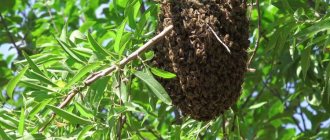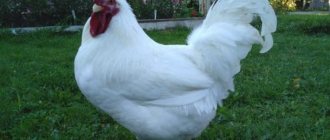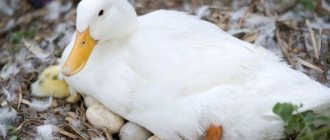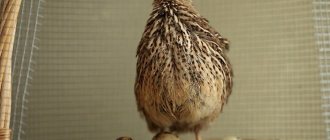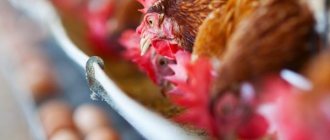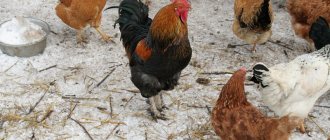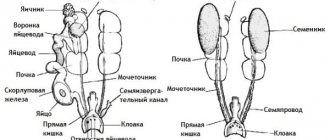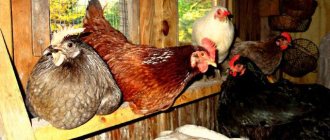Injuries, splinters and other external factors can be the reasons why chickens lame. In some cases, the problem arises due to a lack of microelements and vitamins. Sometimes a limp can be caused by a disease: rickets, tenosynovitis and others. If left untreated, some diseases can lead to the death of a bird. In this article we will tell you how to determine what happened to a chicken. And we'll teach her how to help her.
Unpleasant Accidents
Injury
Lameness can be caused by a sprained or broken leg. Such injuries occur due to:
- fights with relatives;
- accidental fall, for example, from a perch;
- pinching;
- predator attacks;
- stepping on the bird.
If the chicken begins to limp, but no external damage is visible, an examination is carried out for the presence of dislocations or fractures. To do this, her limbs are carefully felt.
If the bird has a dislocation, the bones need to be set back in place. If you have no experience in carrying out such a procedure, it is better not to take risks and seek professional help. You can also do it by phone.
A bone fracture requires surgery, splinting and further rehabilitation of the chicken.
If the bird is limping, but no leg damage is detected, it is recommended to remove it from others. This way she can eat and drink properly.
If the illness is caused by a bruise or an unfortunate fall, after a few days the chicken’s condition will return to normal. And she can be returned to her relatives.
Splinter
Many chickens begin to limp due to a splinter getting into their paw. This is a common occurrence as they walk on the ground a lot and often dig with their feet.
It is easy to detect a splinter - it can be seen with the naked eye. In addition, such an injury is often accompanied by swelling of the affected area.
You can remove a splinter from a chicken's leg yourself. To make the task easier, it is better to remove it with tweezers. After removal, the sore paw should be treated with an antiseptic: miramistine, chlorhexidine, brilliant green.
To prevent the possibility of infection and speed up healing, it is recommended to carry out treatment for 3 days in a row, 2-3 times a day.
If the wounds are not visible, but the chicken continues to limp, it is recommended to seek help from a veterinarian.
Frostbite
This is another reason why chickens limp. Frostbite occurs exclusively in winter and only if chickens are out for a long time.
When frostbite occurs, the limb becomes blue-black and swells. To cure an injured foot, the chicken must be kept warm. It is important to provide her with vitamin drinks. Lubricate damaged areas with goose or pork fat.
The chicken should be kept warm until the leg recovers. If treatment is delayed, frostbite can lead to amputation.
Injuries
A chicken can suffer the following injuries, causing it to fall on its feet:
- fracture;
- rupture, tendon displacement;
- dislocation;
- a cut;
- sprain.
To rule out this cause, carefully examine the bird's limbs. It is also recommended to feel them. A cut can be detected immediately, but a fracture or dislocation requires a more detailed examination.
What to do?
If an injury is discovered, it is best to invite a veterinarian to examine the bird and make recommendations for treatment.
To prevent further injury, remove cutting, dangerous objects from the coop and run area. It is also recommended to keep aggressive birds that start fights in the yard separately.
And do not build a perch in the coop that is too high, as the bird may fall from it while sleeping and be injured. A height of 90 cm is quite enough.
Contents in cages
Adult birds
Chickens often develop leg problems when kept in cages. Or, from hatching, they are kept in a brooder, where there is a mesh on the floor with cells that are too wide.
In the first case, gradual atrophy of the paws occurs due to cramped and uncomfortable conditions. At first the chicken limps. And then he can’t get up at all.
There is only one way out - to organize floor keeping for the birds in a spacious chicken coop. Preferably with the possibility of walking. Timely physical activity will stop the harmful process.
The exception is broilers and meat breed chickens, which are raised for meat and slaughtered at the age of 3-5 months. There is no point in giving them a separate room. After all, they are specially kept in a cage so that they gain weight faster. The condition of their legs doesn't matter here.
If the chicken’s legs have completely atrophied, nothing will help her. So that she does not suffer, it is better to kill her.
Chickens
With chickens the situation is more complicated. Damage to the legs at such a young age is almost impossible to correct.
But it can be prevented. Namely, choose the right grid with cells of the right size. Read about this in the article “Assembling a chicken cage with your own hands.”
Pododermatitis
This disease can also lead to a chicken falling on its feet, and it occurs due to insufficient hygiene of cages and chicken coops.
Along with the bird falling on its feet, in this case the following symptoms appear:
- the skin on the paws becomes inflamed and may crack;
- visible wounds on the legs;
- the bird is limping;
- presses paws to body;
- The chicken's legs are hot to the touch, which indicates an inflammatory process occurring in them.
What to do?
It is necessary to increase the bird’s immunity by adding healthy vitamins and minerals to its diet, and also be sure to monitor hygiene in the room. Change the bedding in cages and nests more often, and remove droppings on time.
Inflamed paws should be thickly lubricated with fish oil or syntamicin ointment. Your veterinarian may also prescribe another anti-inflammatory drug.
Possible diseases
Clinical picture
It often happens that chickens become lame due to the occurrence of a disease. The main signs of a developing disease:
- feather loss;
- decreased egg production;
- bowel dysfunction;
- the appearance of redness on the skin;
- pallor of the scallop;
- temperature increase;
- compaction of soft tissues.
Having discovered, in addition to chromate, the listed symptoms, you need to urgently take action. Otherwise, you may lose some or all of your chicken population.
Common foot diseases
Chickens can lame due to vitamin deficiency - a deficiency of vitamins in the body. The disease causes thinning of the bones.
A lack of minerals also has a detrimental effect on the condition of chicken legs, making them fragile. At first the chicken limps. But without timely intervention, the paws may simply break under its weight.
Rickets leads to softening of bone fibers. Under its influence, chickens develop lameness and unsteady gait. The bird gets to its feet, walks a few meters and falls.
Pododermatitis is accompanied by inflammation of the soft tissue of the paws. The chicken tries not to step on the sore leg and limps.
Another reason is the development of knemidocoptosis. Find out the signs of the disease in the article “Treatment of growths and other diseases of the feet of chickens.”
Other pathologies
Arthritis and tenosynovitis are inflammations of the joints and tissues close to them. With this disease, chickens become very lame. Their joints swell and increase in size. In advanced forms of the disease, the bird may stop moving.
Chick chromatosis is accompanied by swelling and an increase in the size of diseased joints.
Causes of curly fingers: riboflavin deficiency, genetic predisposition. With this disease, the chicken develops a specific gait, since when walking it does not rely on its entire leg.
Perosis develops more often in chickens with large body weight. The main symptom is swelling and unnatural eversion of the hock joints.
Detailed symptoms and causes of these diseases are described in the article “On foot diseases in chickens and their treatment.”
Let's figure out what to do if a chicken is limping on one leg due to the development of the disease.
Arthritis
This disease of poultry is also popularly called “dirty foot disease.” This joint disease is of viral origin. In more rare cases, arthritis occurs as a result of an unbalanced, poor diet.
Viral arthritis is often called tenosynovitis. The causative agent of this dangerous disease is reovirus. In this case, the chicken will first begin to limp, then become almost motionless. A rupture of the shin bones and severe destruction of the cartilage tissue in the legs are likely.
The bird's appetite decreases, and the skin color becomes pale. Egg production and bird weight also decrease noticeably. Viral arthritis often develops as a complication after infectious diseases suffered by birds.
It is not difficult to detect the disease: you just need to carefully feel the bird’s joints. With arthritis, the joints will be noticeably inflamed, swollen, and hot to the touch.
Additional symptoms may include:
- pain in the legs of the bird;
- stiffness of movement, leading, among other things, to falls;
- complete failure of the legs is also possible - then the birds sit or lie down and practically do not move.
Note that this disease is dangerous and is difficult for chickens to tolerate. If the disease is not treated, inflammation from one joint will spread to others, expand, and go deeper into the tissue.
Thus, the acute phase of the disease turns into a chronic one. More often, adults suffer from arthritis; chickens are much less likely to suffer from arthritis.
What to do?
Arthritis needs to be treated urgently, as the disease progresses rapidly. Special antiviral drugs are prescribed.
Along with antivirals, antibiotic treatment is also indicated. The following drugs can be considered as suitable antibiotics for viral arthritis:
- Ampicillin;
- Sulfadimethoxine;
- Polymyxin M sulfate;
- Benzidepenicillin.
Give antibiotics to chickens for at least five days. Usually the course takes a week, but if the arthritis has progressed greatly, it can take longer. It is not advisable to self-medicate; it is recommended to show sick birds to a veterinarian.
They are also treated with folk remedies, which according to reviews are quite effective. So, some poultry farmers give sick chickens a drink of vodka: however, with this method it is important not to overdo it with the “treatment”. Otherwise, the bird will do more harm than good.
Preventive measures are also important to help minimize the likelihood of disease. To prevent chickens from getting arthritis, keep the room where they are kept clean. It is necessary to regularly clean cages and pens, and immediately isolate sick birds from others.
Multivitamins and green food will be very useful for arthritis.
Help for a sick person
general information
To restore the health of chickens, you need to follow several recommendations.
First of all, organize comfortable living conditions.
Then make changes to the birds' menu.
If necessary, use folk remedies and medications.
Let's consider each point separately.
Comfort comes first
For the normal functioning of chickens, it is necessary to reconsider the lighting system of the chicken coop. It should be illuminated from 6 am to 8 pm.
If the birds are kept in a closed barn or cages, they must be taken out for a walk in the fresh air in sunny weather. The walking area must be fenced. It must be periodically removed from splinters, dry branches, thorns and other objects that can damage the chickens’ legs.
Ultraviolet lamps will help chickens and grown young animals that have not yet been released for walking. As a treatment and preventive measure.
Additional measures: changing perches to more comfortable ones. Information on the topic is given in the article “How to build chicken roosts.”
Diet adjustments
The chicken menu should include fresh green feed daily in the summer, and grass hay in the winter. Several times a week - raw and boiled vegetables, fruit carrion. This will help compensate for the lack of vitamins.
Mineral additives are required: crushed eggshells, chalk or gypsum, limestone, table salt, sulfur, shell rock, wood ash.
The problem of mineral deficiency is especially relevant for laying hens. During egg work, their body spends the lion's share of its reserves of microelements.
It is good to give chickens bait with vitamin B: fish scraps, oats, legumes. And foods rich in retinol (antioxidant): fish oil, yolk.
From time to time, instead of drinking, birds should be given fermented milk products: kefir, fermented baked milk. They contain calcium, phosphorus and substances that improve the functioning of the gastrointestinal tract.
Also, drinking can be replaced with decoctions based on beneficial herbs: coltsfoot, chamomile, nettle.
Store-bought vitamin and mineral complexes
From time to time, it is advisable to give chickens ready-made multivitamins and minerals according to the instructions. For example, trivit, feed tricalcium phosphate.
You also need to add bait with manganese to the diet.
If chickens do not have enough natural light, water-soluble vitamin D3 will help. It is added 3 times a day to fresh drink, 0.05-0.1 ml, depending on the age of the bird. Treatment lasts 2 weeks.
A concentrated solution of vitamin D2, which should be alternated with D3, would also be useful. Dose: 2-3 drops per kilogram of food. Course - 7 days.
Paw treatment
To treat feet, a soap solution is sometimes used as a folk remedy. 50 g of laundry soap should be diluted in a liter of warm water. Place the chicken feet in the resulting liquid for 2 minutes. Finally, lubricate them with birch tar.
You can also use novertin or aversectin ointments according to the instructions.
If the soles of the feet are affected, they should be smeared with levomekol three times a day. For old corns, it is recommended to first make soda baths and soak the chicken’s paws in them for 10 minutes. Treatment lasts 5-7 days.
To restore the skin after treatment, the birds' legs must be smeared with Vishnevsky ointment.
Serious therapy
In advanced cases, chickens are treated with antibiotics. The following will cope with the task:
- sulfadimethoxine: from 100 to 200 mg per 1 kg of poultry live weight;
- ampicillin: from 15 to 20 mg per 1 kg of weight.
Medicines are administered to chickens intramuscularly. Or mixed into drinks or food. Duration of therapy is about 5 days.
Read about all the properties of the drugs in the article “What antibiotics are needed for chickens.”
When the chances are slim
Sometimes enhanced treatment only helps to reduce symptoms. And the only option is surgery. But it is advisable to do this if a chicken of an expensive decorative breed gets sick. In other cases, it is better to slaughter the bird.
Paralysis of the paws or their congenital defects cannot be eliminated.
Perosis
In simple terms, perosis is nothing more than a displacement of the tendons. Most often, this disease affects broiler chickens that grow too quickly.
The disease occurs due to a lack of B vitamins and other valuable microelements in the diet. The symptom is the bird's paws, turned at an unnatural angle. Such an individual is not able to jump onto a perch; it eats little, practically does not move, and its legs give out.
What to do?
Treatment is ineffective; chickens with perosis are usually destroyed. Well, for the purpose of prevention, it is, of course, necessary to make the birds’ diet complete and fortified.
Conclusion
Lameness does not always indicate the presence of disease. And it may be the result of a banal bruise. But when this symptom occurs, you must definitely pay attention to the behavior of other chickens.
If only one bird suffers from lameness, then there is no cause for concern. Otherwise, you need to separate suspicious chickens from the flock and begin treatment. This will help avoid mass infection.
Dear poultry farmers, have you ever encountered lameness in chickens? Please tell us in the comments how you dealt with this problem.
Please spread useful information online by reposting. Special thanks for the 5 stars.
Scabies
This disease, which is not very dangerous for humans, in the avian environment can even lead to such serious consequences as falling on one’s feet.
Scabies is diagnosed quite simply, since in this case growths appear on the bird’s legs that an experienced veterinarian will not confuse with anything else. The causative agent of the disease is the scabies mite. The parasite is transmitted to birds from sick individuals, through a common feeder and bedding.
Symptoms of avian mange are as follows:
- Unsightly growths form on the paws, preventing the bird from walking and moving;
- a white coating is noticeable on the skin of the paws (“lime foot”, as people say);
- the chicken gets up extremely reluctantly and only as a last resort;
- the bird is inactive and lethargic.
What to do if the bird is debilitated by scabies?
Fortunately, scabies is the lesser evil in this case. Treating the disease is simple: the legs of affected individuals are treated with a strong solution of soap, and then with special anti-scabies preparations.
Other reasons
There are other possible reasons for chickens falling on their feet - they happen less frequently, but are still possible.
Firstly, the culprit of the problem is sometimes the too cramped space in which the chickens are kept. If birds are forced to live in cramped conditions, they have little space for walking and maneuvering, and as a result, laying hens lead a sedentary life. The paw muscles in such conditions can simply atrophy.
Infectious diseases that the bird suffers from can also be the culprits of the problem. Note that weakness and incontinence of a chicken on its legs can be a sign of many diseases characteristic of poultry.
Congenital pathology also occurs, which leads to curling of the toes. Underdevelopment of joints, as well as inflammatory processes in them, can also lead to chickens falling on their feet.
Whatever the reason, in any case it is necessary to establish it as quickly as possible and begin treatment of the bird.
General treatment recommendations
Let's find out what general measures will allow you to cure the bird and avoid further problems with it falling on its feet.
Diet
Analyze the chicken’s nutrition and include more fortified components in the diet. In any case, this measure will be beneficial and can save the chicken not only from the problem in question, but also from many other diseases.
Starting from the fifth day after birth, give chickens vitamins A and E. Add mineral salt, chalk, fish or bone meal to the feed of adult birds.
It is especially important to fill the diet with useful microelements if the chicken’s beak tissue is also softened during examination, and it lays eggs with a fragile, soft shell. This is a clear lack of calcium.
Sun
Record how much time the birds spend outdoors. Lack of lighting can negatively affect the condition of the chicken.
Care, arrangement
Competent and timely care of laying hens is extremely important. Birds should not be kept crowded, in a stuffy small chicken coop or cage. Arrange the chicken coop so that there is at least one square meter per 3-4 adults. meters of space.
https://www.youtube.com/watch?v=xsWL53eu7AY
Problems with fingers
If the chicken is limping, it may be caused by crooked toes. With this pathology, birds place their paws crookedly, resting on the sides. What to do in this case depends on the reason that caused the problem. Curvature develops due to:
- non-compliance with the incubation regime;
- genetic factors;
- unbalanced diet.
Individuals with crooked toes are not used for reproduction. In most cases, they are sent to slaughter - treatment is ineffective.
With curliness, the end segments of the fingers are paralyzed - they bend downwards. When walking, the emphasis falls on them, which brings serious discomfort to the bird. The cause of pathological changes is most often a deficiency of riboflavin. The food is enriched with vitamin B2. As in the case of crooked fingers, further keeping of the bird is not advisable.
Why do chickens fall on their feet: how to treat them?
Chickens are the most popular bird raised by breeders. Poultry farmers with many years of experience understand well what problems with the health of birds can arise and what to do. Novice breeders may not even notice the first signs of illness in chickens. Many people begin to understand that birds are seriously ill when they fall on their feet and die. What to do and how to treat birds, especially at an early age?
Inflammation of the joints and tendons is a common reason why chickens begin to limp, hobble, or fall on their feet.
We invite you to learn about the most common reasons why chickens fall on their feet:
A lack of vitamins and microelements is a reason that does not lead to the death of a chicken, but the problem will still have to be solved. With vitamin and mineral deficiency or starvation, the bird weakens so much that it simply does not have the strength to spend the whole day on its feet. The situation can be corrected simply by including a complex of nutritional supplements consisting of vitamins and microelements in the chickens’ diet. Complex drugs are sold in veterinary pharmacies. If the breeder wants to correct the situation using natural supplements, then the diet should include lump chalk, small river shells, slaked lime, eggshells and a sufficient amount of fresh, varied greens, vegetable tops, grated root vegetables, and sprouted grains.
Inflammation of the joints and tendons is a common reason why chickens begin to limp, hobble, or fall on their feet. Kroeder and second-year chickens are predisposed to the development of arthritis, arthrosis and tendonitis. Broiler chickens grow rapidly, quickly gain weight, and the musculoskeletal system does not have time to develop normally and become sufficiently strong. Body weight increases rapidly and the bird cannot stand on weak legs. Making an accurate diagnosis is not difficult. You need to pick up the sick chicken and carefully examine its paws.
Has your local body temperature increased? Are there any wounds or damage? Pay attention to the shape of the joints. When a problem is discovered, some decide to send the sick bird to slaughter, but it is also possible to cure the bird. Feed tricalcium phosphate at a dosage of up to 10 g per individual is a good way to alleviate the bird’s condition
Penicillin antibiotics will kill bacteria and relieve inflammation. Ampicillin and ofloxacin are inexpensive and effective antibiotics that can be mixed into the feed of each sick bird, 1 tablet per day, for 5-7 days.
Feed tricalcium phosphate at a dosage of up to 10 g per bird is a good way to alleviate the bird’s condition. Penicillin antibiotics will kill bacteria and relieve inflammation. Ampicillin and ofloxacin are inexpensive and effective antibiotics that can be mixed into the feed of each sick bird, 1 tablet per day, for 5-7 days.
Physical injury is a common problem when raising meat chickens. By nature, broiler chickens are bulkier and clumsier, so if they land poorly or try to climb high onto perches in the chicken coop, the bird may fall and be injured. When examining a sick individual, a breeder may reveal swelling of the paw and thigh. It is necessary to carefully examine the integrity of the bones. This is not difficult to do if you carefully palpate the limb for pathological mobility and crepitus of bone fragments, and check whether the joint is dislocated. If the bone is broken, then it is better to send the bird for slaughter, this is especially justified in case of an open fracture. If the damage is not serious, then topical application of an anti-inflammatory ointment will be sufficient. You can choose Oflocain ointment, which contains both an antibiotic and an anti-inflammatory drug. A cheaper option is diclofenac ointment, which relieves swelling and inflammation.
This does not describe all the reasons why chickens fall on their feet. However, these are the most common problems. You should always remember that qualified assistance from a veterinarian will be very useful. It is better to consult with a specialist than to suffer significant damage from the death of chickens or adult chickens.
Chicken lameness
It happens that lameness in domestic chickens is not caused by a disease as such, but by problems like:
- overgrown spurs (in roosters);
- mechanical leg injury;
- thread wound around a paw;
- a ball of droppings stuck to the claw and daily acquiring a new layer of dirt;
- sprained muscles and ligaments after an unsuccessful landing from a perch;
- hypovitaminosis;
- rapid weight gain.
As the condition worsens, and also due to the uneven distribution of the load on the legs, the lameness becomes stronger every day, and over time affects both legs.
How it manifests itself
Sick chicken:
- falls on one paw;
- lies for a long time;
- eats poorly;
- stands with his unhealthy limb tucked in;
- falls after walking a few steps.
If lameness is caused by injury or wound, swelling of the affected joint or suppuration and bleeding of the wound is added to the symptoms listed above.
How to treat
First, the chicken should be caught and examined. Having found a problem:
- the thread is cut from the paw;
- dried droppings are removed, leaving the claw intact.
When a bird has suffered from adhering dirt for a long time, it is possible that part of the finger may die off. For further actions, you should consult your veterinarian.
In case of damage to tendons and muscles, nothing needs to be done; recovery will occur naturally. The wound on the paw is treated taking into account its severity.
